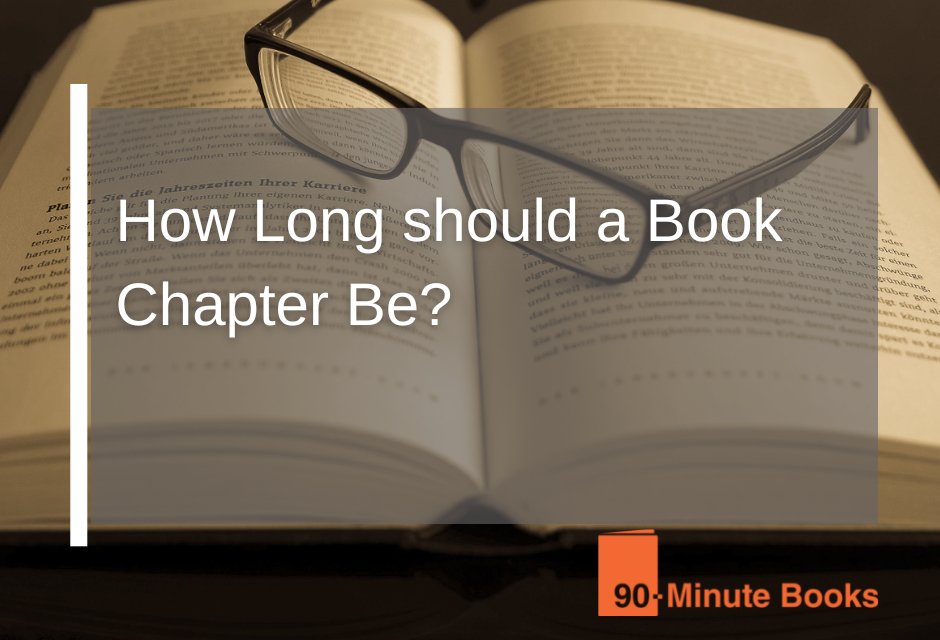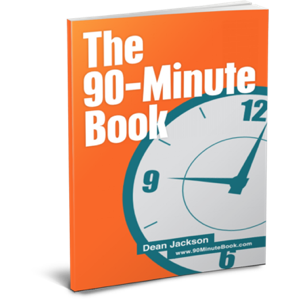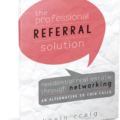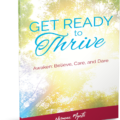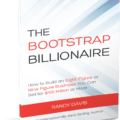Did you ever read a chapter so long that you started to lose interest, or think the author was just ranting for the sake of it without anything related to the plot?
This is why the length of the chapter matters.
Now that you have finished structuring your book, it is time to start writing.
Why does Chapter Length matter?
When designing a book, you must consider how long each chapter is. The length of each chapter in a book should be consistent to make the book more enjoyable.
The way you end a chapter must:
- Help keep your readers in the story.
- Help reset the story, so there’s no info overload. (Imagine watching all the Harry Potter movies at once.)
- Help adjust the pacing of the story.
- Help create suspense.
If your chapters are too short, the readers may not have a consistent experience.
Readers may get bored and stop reading the story if a chapter is too long. A break between chapters lets readers take a short break to process what they have read.
The word count for a book is important. The number of words in a chapter is important for the flow of your story. This doesn’t matter for your first draft, but keep this in mind for later.

FREE BOOK
Discover the 5 Compelling Book Titles Types that create an ‘I Want That…’ response.
It’s Up to You
I suggest that you start by dividing your book into potential chapters. Once you know how many chapters there could be, you can think about an appropriate length for each. Think of it as your favorite TV series. Each chapter comprises one or more scenes that help move the story along.
TV series have a set time limit, but movies do not. Important scenes might need longer chapters.
Some authors have one chapter that is much longer than the other chapters in the book, which might be odd to readers.
Your audience also plays a significant role. For example, books for young readers have fewer and shorter chapters than novels for adult readers. There is no rule stating that chapters must be short, but it makes sense to write shorter chapters if you are writing for younger readers.
Determining Chapter Length
When thinking about publishing a book, you need to consider the different parts of a book and how long each chapter should be. You can use chapter spans to control the pacing and structure of your novel. Many shorter sections in a row will quicken the tempo, while longer sections will have the opposite effect.
Different people give you different numbers. The average word count for a chapter is between 1,500 and 5,000 words, with 3,000 to 4,000 being the most common.
The numbers don’t have to be followed strictly; every chapter doesn’t have to match the range. In fact, books with smaller chapters tend to become bestsellers.
The chapter length depends purely on the story. For example,
The length of the chapters in “The Fault In Our Stars” reflects the amount of time left that Hazel has with Augustus. The way you section your book affects the reader’s experience.
There Are No Rules
Sometimes writers use extremely short chapters with only one or two lines to emphasize a point. Authors seldom use online chapters that consist of only 1-2 lines or even a single word. It loses effect if everyone does it.
If you are a new author, you might not be able to get away with having chapters with more than 5,000 words.
What Matters the Most
Don’t bore your readers with a chapter that has no bearing on the plot. It will just make them think you’re rambling. At the same time, you shouldn’t compress an exciting chapter just to lessen the word count.
Chapters that are 3,000 to 5,000 words long might be a good way to organize your book. The story should be the most important thing to consider.
Workers: You should build your plot through a series of events or scenes, then decide where your divisions will be. This will help you ensure that your workers understand the story and follow the plot easily. You may want to add or remove scenes from the chapters, or you might want to focus on just one scene per chapter. Be sure to divide the text into a place where the reader can take a break.
How to Write A Chapter Break
Create An Entrance
I’m talking about the experience of Indian cinema and how it differs from other types of cinema. I’ve watched many Indian movies in theaters, and I think the experience is unique.
Do you know how they introduce a main character before the interval? A man is shown walking without revealing his face, and when they do, the word “interval” is shown on the screen. If you read the text closely, you’ll either wonder who the subject is or think, “Damn it, it was him all along.” I should have guessed that the movie would be (insert genre here).
This is the type of entrance you need to make to be successful.
You can reveal what makes people go at the end of the chapter. I wonder who this is? I need to keep reading or the latter.
An excellent way to end a chapter is to have an arrival.
The Promise
This text teases the reader with a hint of what will come next, promising more excitement in the following chapter.
Here is an example:
”Their big day is tomorrow. They reviewed the plan again over dinner before packing their bags. An hour later, they were fast asleep. That was the first time they had prayed in their lives. This was the biggest adventure they would ever have, and they were ready for it.”
The passage tells of many exciting adventures that are yet to come. The chapter break is, unfortunately, placed in a way that makes you want more.
Create A Mystery
Many chapters end with a bit of mystery. The future is an unknown quantity. You don’t know what will happen.
”The zombies were coming towards us. We were trapped with no way to escape. I took out a gun, aimed it at the dead creature, and pulled the trigger. Why wasn’t it going off? I clicked several times. The gun was out of bullets, and the only other way to escape was gone. After pondering which part of my body they would devour first, the electricity and a gunshot rang out simultaneously.”
The narrator is unsure of what will happen next, making the reader want to continue reading to find out.
How to Write a Book Chapter
Create an outline for the chapter
Mindmapping through brainstorming is the best way to create an outline for your chapter.
Then you take a step back and start to see patterns, themes, and what goes together A mindmap is a brainstorming tool where you dump all your ideas onto paper or a computer file. Once you have all your ideas, you step back and look for patterns, themes, and relationships between ideas.
When you have finished your work, you can examine it to see if a central idea is beginning to emerge. At this point, you can start linking them together. Organizing your ideas can make it easier to analyze and visualize them.
As you gain experience writing book chapters, you will better understand how many sections are appropriate for your book’s subject matter.
Here’s how to create an outline for your chapter:
What ideas and topics should be covered in this chapter? Make a list of them.
Build the chapter structure
Now that you understand the basics, let’s discuss what makes an effective chapter structure.
Make sure to include each element of your chapter structure for every new chapter you write.
Standardizing your format can be helpful, whether you’re writing with a pen and paper or using book software on your computer. Following this plan will help you stay focused and write your chapters in a more organized and structured way.
Here are the elements of a chapter structure:
- A title or headline
- An introduction that hooks
- Body paragraphs that provide further details
- A recap, or summary, of the chapter
- A transition to the next chapter
Depending on your genre and needs, you can add more or less to each chapter, but your chapter contents should be related to your overall theme.
Be direct and forthcoming with information to ensure your reader understands the overall picture.
If the contents of your chapter don’t fit into the theme, take it out. If there is information in the text that isn’t necessary for the reader to know or causes the reader to go off on a tangent, it should be removed.
Only include what is absolutely necessary and remove anything extra. Most likely, the information is either not useful for your work or would be more appropriate in a different section.
Write an eye-catching chapter title or headline
While learning how to write a book chapter, you will understand how crucial it is to have titles for your attention-grabbing chapters.
But if nobody sees it, it doesn’t matter. Even if your content is world-changing, it won’t make a difference if no one sees it. People won’t read your book if you don’t know how to write a chapter headline that captures attention.
When talking to someone undecided about buying your book, it is important to be clear. They look through your table of contents or flip through the pages to see if anything stands out.
Your chapter headline should make the reader curious and want to learn more.
The first element of a chapter’s structure is the headline, but many authors find it easier to create the headline after it has been written.
Once your chapter is written, write your headline.
You shouldn’t spend time editing your headlines every time you change your chapter or concept, because it’s likely to change again.
Here are three types of headlines you can write:
- Use the “How to…” approach
- Use a phrase or belief statement
- Present it as a question
Hook readers with your chapter intro
Alright! You have piqued the reader’s curiosity, and they want to know more. You want to avoid errors in your first chapter and have an engaging introduction that will keep people interested in your content.
An example of a hook from Law and Order would be a scene where a victim is found, and the detectives have to figure out who did it. They open every episode with a scene of the murder taking place. This is what draws the viewers in and keeps them watching.
This technique hooks viewers, myself included, and makes us want to know more.
The episode ends with us not knowing who committed the murder, but the screenwriter’s hook (“How did they die?”) implies that we will find out eventually.
Unless you’re writing a horror book, you shouldn’t make your chapter introduction too dramatic. However, there are ways you can make it engaging. You can follow a few simple steps to learn how to write an intro, which can then be applied to all subsequent chapters.
Here’s how to hook your reader at the start of your book’s chapter:
- Share a personal story
- Show a conversation or dialogue
- Add powerful quotes
- Add shocking statistics
What other ways can you think of to get your reader’s attention? Get creative!
The best way to engage your reader in the first chapter, in my experience, is to share a personal story. This is for two reasons.
Expand your story with main points
Great job! Your opening is engaging, and people are hooked. Your readers can’t put the book down.
But now it’s time to dive into the details. Expand your opening and begin to explain your points.
This is where you offer your reader the gold. How will you solve their problem? What does the reader need to know? Continue to make progress and ensure each idea flows smoothly into the next.
You can have as many points as you want. I typically share three points within chapter topics to provide more information on the subject.
In my book The Introverted Immigrant’s Journey, I discuss three ways to overcome fear, worry, and anxiety.
Step 1: Awareness
Step 2: Identifying self-sabotaging thoughts
Step 3: Take action (despite the fear)
Write a summary of the book chapter
Celebrate! You’re almost to the finish line.
Now, simplify what you just said into a brief summary. After giving the reader a lot of information, you need to remind them of what was said and tie up any loose ends.
When you write a summary of your book’s chapter, you essentially repeat the information you shared in that section.
If you want to be remembered, make sure what people read last is from you.
Guest Post Disclaimer
The views expressed in this post do not represent the views of 90-Minute Books. The information has not been verified and should be considered an opinion. You are always advised to do independent research.

